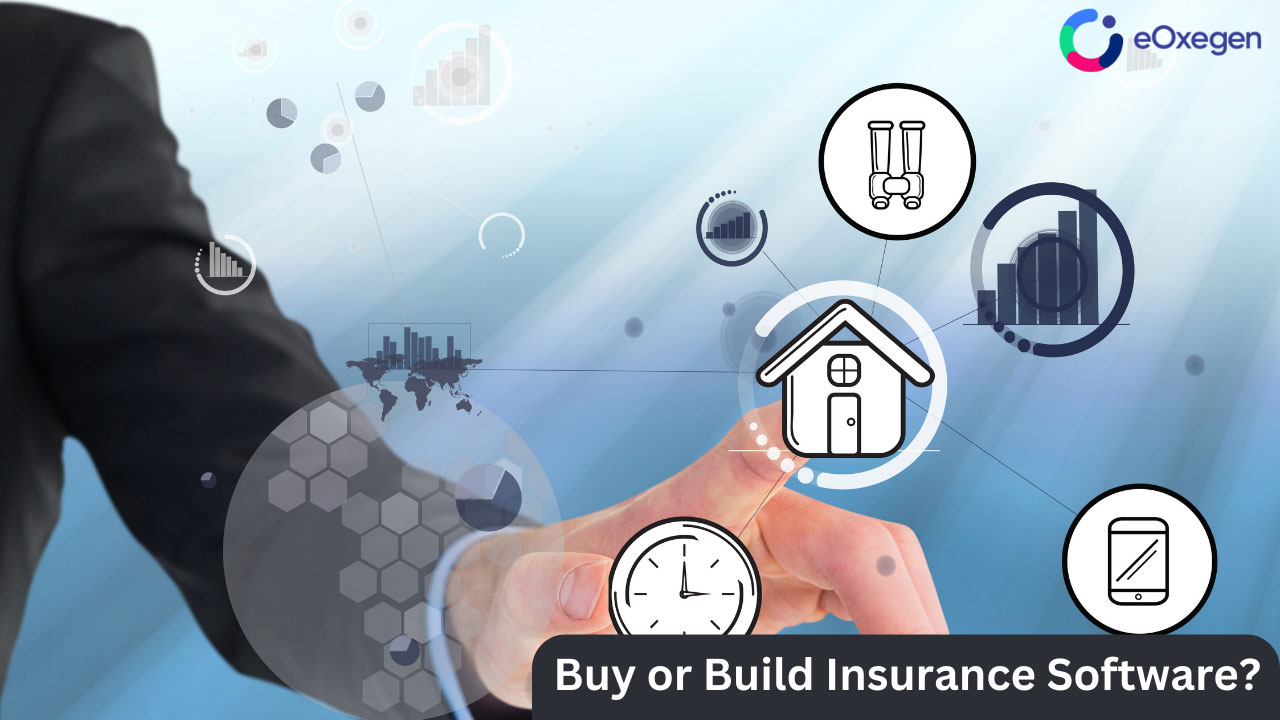Buy or Build Insurance Software? A Game-Changing Question in Insurance Industry
20th April, 2023

The insurance industry has evolved rapidly in recent years. With the advent of advanced technology, insurance companies are looking for innovative ways to streamline their operations and enhance customer experience. Insurance business management software plays a critical role in the insurance industry. It helps insurers automate their processes, reduce manual errors, and deliver better customer experiences. Insurance software is designed to perform a variety of functions such as underwriting, policy administration, claims processing, risk management, and many more.
In today's fast-paced digital era, the question that often arises is whether to buy or build insurance software. Let’s explore these options to make an ultimate opinion!
Importance of Insurance Software in the Industry
Insurance software has become a vital component of the insurance industry. The technology has transformed the way insurers conduct their business, making their processes faster, more efficient, and more cost-effective. The traditional methods of doing business are slowly fading away, replaced by innovative technologies that have made insurance more accessible to the masses.
The rise of insurtech has paved the way for new entrants to the industry, challenging established players to adapt to the changing market. Insurtech has enabled smaller players to compete with larger firms by offering innovative products and services at lower costs.
Buy or Build Insurance Software?

The question of whether to buy or build insurance software is a crucial one for insurance companies. The answer depends on various factors, such as the size of the company, the complexity of the insurance products offered, and the availability of technical resources.
Buying insurance software means purchasing a pre-built solution from an IT service provider. Building insurance software means developing the software in-house or outsourcing the development to a third-party. Both options have their advantages and disadvantages.
Buying Insurance Software
Buying insurance software is a vital step for insurance companies in the modern digital era. It offers several advantages:
-
Cost-Effective
Buying insurance software is a cost-effective solution for insurance companies. Purchasing software from an IT service provider eliminates the need for in-house development, reducing development costs significantly.
-
Time-Saving
Buying insurance software saves time for insurers, and can also be easily customized to match their specific needs. This ensures that the insurer gets a tailored solution that meets their needs without the time and cost of in-house development.
-
Access to Experts and Support Teams
When buying insurance software, insurers gain access to experts and support teams provided by the IT service provider. These experts have domain expertise for each client and their services, and can help with any technical issues that may arise, ensuring the software runs smoothly.
While buying insurance software can be cost-effective and save time, there are some minor drawbacks to consider. These include limited customization options, dependence on the IT service provider for updates and improvements, and potential data privacy and security concerns.
Building Insurance Software
Building insurance software is a viable option for insurance companies that seek a high level of customization and flexibility in their software solutions. This approach involves developing software in-house or with the help of a software development team. Benefits include:
-
High Degree of Customization and Flexibility
Building insurance software provides a high degree of customization and flexibility. Insurers can customize the software to meet their specific needs and make changes as needed.
-
Control over Updates and Improvements
When building insurance software, insurers have complete control over updates and improvements. They can prioritize updates and improvements that align with their business goals.
Building insurance software can be a costly and time-consuming process, requiring significant technical expertise and resources. It also has the potential for delayed time-to-market, as it may take longer to develop and launch.
Recent Advancements in Insurance Software

The insurance industry has been embracing digital transformation, and with that, insurance software has seen numerous advancements in recent years. These advancements have introduced new features and capabilities that can have a significant impact on the insurance business.
- Machine learning and AI capabilities are transforming the insurance industry. Insurers can use these technologies to improve their underwriting processes, claims processing, and risk management. Machine learning and AI can analyze large volumes of data and provide insights that can help insurers make more informed decisions.
- Integration with blockchain technology has the potential to revolutionize the insurance industry. Blockchain can provide secure, transparent, and decentralized data storage, making it easier for insurers to manage policies and claims.
- Predictive analytics for risk management is another advancement in insurance software. Insurers can use predictive analytics to identify potential risks and take preventive measures. Predictive analytics can also help insurers assess risk more accurately, leading to better pricing decisions.
Wrapping Up
While building software provides a high degree of customization and flexibility, buying software can be a cost-effective and time-saving solution. Additionally, buying software can provide access to experts and support teams and the latest advancements in insurance software.
Ultimately, the decision to buy or build insurance software should be made based on individual business needs and priorities. Insurance companies should carefully consider the pros and cons of each option before making a decision. By doing so, they can make an informed decision that will enable them to deliver the best possible services to their customers while maximizing their profits.
Recent Articles
- How do Big Insurers Engage with the New-Age InsurTech Companies?
- Insurance Management System Integration: Maximizing Efficiency and Performance
- Will Blockchain Technology Reshape the Insurance Market?
- The Future of Health Insurance: Predictive Analytics and AI
- Buy or Build Insurance Software? A Game-Changing Question in Insurance Industry